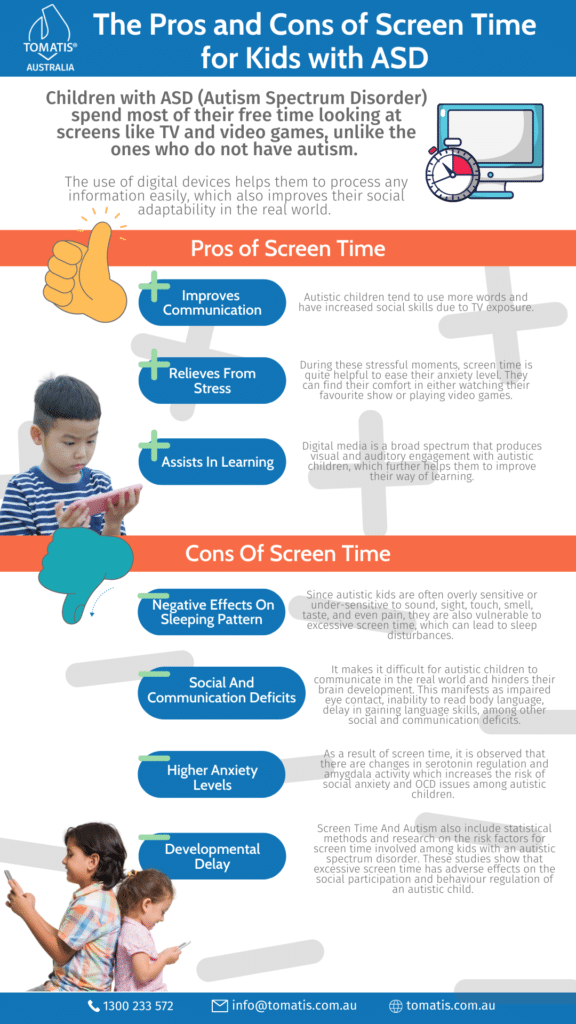Children with ASD (Autism Spectrum Disorder) spend most of their free time looking at screens like TV and video games, unlike the ones who do not have autism. The use of digital devices helps them to process any information easily, which also improves their social adaptability in the real world.
But did you know that too much screen time also comes with several drawbacks?
Are you someone who wants to be aware of the positive and negative effects of technology on your autistic child?
To understand the effects of too much screen time on the behaviour and coping mechanisms of your child with ASD, today we will share the pros and cons of screen time and the strategies to reduce its harmful effects on children with autism.







